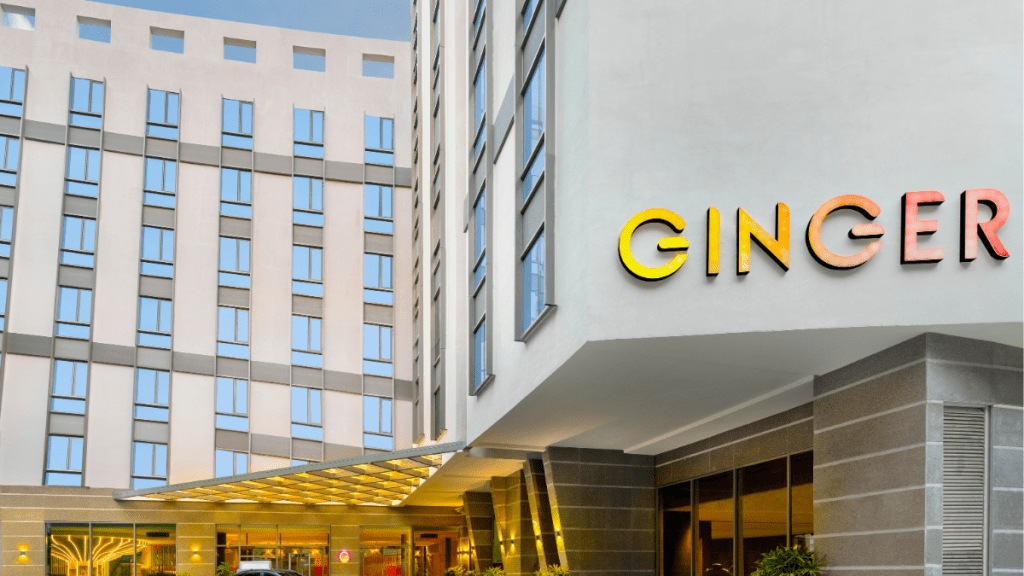At a media interaction last month, Deepika Rao, executive VP for new business and hotel openings at Indian Hotel Company (IHCL), said that Ginger Hotels will lead the growth of new businesses of the company. That’s a far cry from the days when wedged between web-based hotel aggregators on the one hand and brash global competitors on the other, the hotel chain tripped on its expansion targets, and forced its bosses to re-examine the whole business model in 2018.
Cut to 2024. After jettisoning its “budget” tag for a “lean luxe” positioning, it is ready to quickly expand its footprint across metros, tier-I and smaller cities in the country. The brand recently launched a 371-key property at the Mumbai airport and will develop another 300-room Ginger hotel at the new Mopa international airport in Goa and another large property of over 300 rooms near Bengaluru airport.
Ginger already has 64 operating hotels with 26 more in the pipeline; the brand expects to have a total of 125 properties across the country by FY26.
As per industry estimates, the country’s travel market is projected to reach $125 billion by FY27 from an estimated $75 billion in FY20. The midscale and economy hotel segment accounts for 35-40% of the total hotel inventory, a notable jump from under 10% a couple of decades ago. Luxury hotels on the other hand account for under 20% compared with 27% back in 2000.
An August 2023 report by JM Financial says the mid to upper midscale inventory is still inadequate considering India’s large and prospering middle class. Demand for this segment is the strongest as domestic travellers are value seekers moving towards chain-affiliated rooms rather than unbranded hotels.
It is this growth that makes a brand like Ginger relevant in India’s hospitality business. And it is not just tier-II and III markets that are seeing increasing demand in this segment. The metros too haven’t reached saturation levels, notes Suma Venkatesh, executive VP for real estate and development at IHCL. “For example, the new Mumbai airport hotel is the fourth Ginger hotel in the same micro-market within the city. The other three properties have recorded over 84% occupancy in the past year, which indicates there is no cannibalisation of any existing hotel businesses,” says Venkatesh.
Currently, Maharashtra is the largest revenue contributor for the brand because Ginger’s presence is strongest in the state but Venkatesh says that would change as new properties open up.
Lean and mean
Although the Ginger brand has been in existence since 2004, it was only in 2018 that IHCL revamped its brand identity, giving it the ‘lean luxe’ badge. Two-thirds of the existing Ginger hotels have been revamped and IHCL expects to complete the makeover for the remaining properties by the end of the next fiscal.
In the past, the brand has often been seen as a business hotel but Rao argues that the reimagined Ginger straddles multiple purposes of visit. “Our properties are in both, vacation spots and commercial centres. Religious tourism is also on the rise and to cater to that demand, we have Ginger properties in locations like Amritsar, Nashik and Ujjain,” she says, adding that the brand also has a property coming up in Ayodhya.
The concept of ‘lean luxury’ makes sense in a market like India with travellers increasingly seeking value for money, points out Mandeep S. Lamba, president & CEO (South Asia), HVS ANAROCK, a hospitality advisory firm.
However, this segment is not without challenges. “One of the challenges is maintaining the delicate balance between providing luxury-like experiences while keeping prices affordable. This segment aims to attract budget-conscious travellers who still desire some level of luxury, which requires strategic decisions regarding amenities, and overall guest experiences to ensure they are cost-effective yet appealing,” says Lamba. Another challenge lies in differentiating the brand from several economy and midscale players. He adds that lean luxury hotels must toe the fine line between these segments, without reaching the price point of traditional midscale or upscale hotels.
